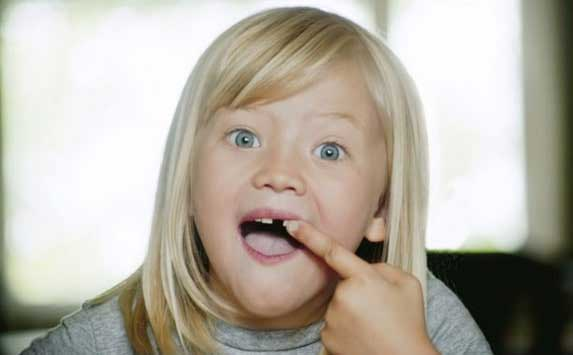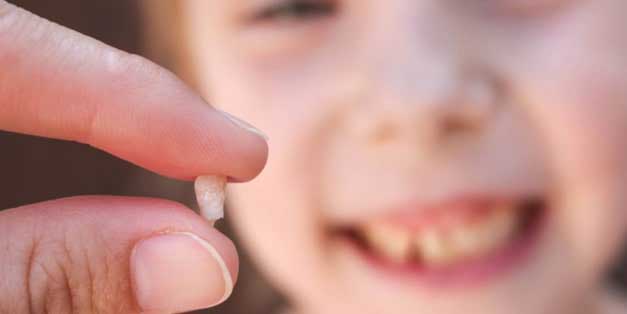Losing baby teeth is a childhood milestone that many parents and children celebrate. From the excitement of waiting for the tooth fairy to collecting that first lost tooth as a keepsake, it’s a cherished moment for families. But after that first tooth is stashed away, most of the others are discarded without much thought. However, scientists are now suggesting that parents should hang on to all of their children’s baby teeth—and not just for sentimental reasons. There’s a surprising and potentially life-saving benefit to holding onto these tiny treasures.

Source: LiveStrong
The Hidden Power of Baby Teeth: Stem Cells
In recent years, research has uncovered an incredible resource hidden within baby teeth: stem cells. These cells are special because they have the ability to develop into various types of tissues in the body. The stem cells found in baby teeth, called mesenchymal stem cells, are particularly valuable. They have the potential to regenerate bone, cartilage, muscle, and even nerve cells.
What does this mean for your child’s future? These stem cells could one day be used to treat serious illnesses, such as Parkinson’s disease, Alzheimer’s, diabetes, and certain types of cancer. For parents, keeping baby teeth could be like storing a valuable medical resource that might save your child’s life down the road.
Stem Cells and Their Role in Medical Treatments
Stem cells are often hailed as the future of medical science due to their regenerative abilities. In fact, stem cells are already being used in treatments for a wide range of diseases. For example, they are used in bone marrow transplants to treat leukemia and other blood disorders. Similarly, stem cells hold the potential for regenerating damaged tissues, offering new hope for conditions that were once thought to be incurable.
The key benefit of stem cells from baby teeth is that they are a perfect genetic match for the child, reducing the risk of rejection if they are needed for a future treatment. This also eliminates the time and stress involved in finding a compatible donor. For diseases where time is of the essence, having these stem cells readily available could make a critical difference.
Why Baby Teeth Are a Unique Source of Stem Cells
So, why do scientists emphasize baby teeth? It turns out that the pulp inside these teeth is rich in stem cells, which are in their prime because they are young and haven’t yet been exposed to many of the environmental factors that degrade cells over time. The younger the stem cells, the more viable they are for regenerative purposes.
Once a child loses their baby teeth, the stem cells inside them can still be harvested, but they need to be preserved properly. This is why simply keeping the teeth in a keepsake box won’t be enough. Tooth banking is becoming an important option for parents who want to store their children’s teeth under optimal conditions, so the stem cells remain viable for future use.
Tooth Banking: How It Works and Why It Matters
To ensure that the stem cells in baby teeth remain usable, it’s essential to store them in the right environment. That’s where tooth banking comes into play. Tooth banking services, such as Tooth Bank, specialize in cryogenically freezing and preserving the teeth and their valuable stem cells. By keeping the teeth in a regulated, frozen environment, the cells are kept alive and ready for use should they ever be needed in the future.
The process is simple:
- After your child loses a tooth, you contact a tooth banking service.
- The tooth is shipped to their facility in a special kit that preserves its integrity.
- The facility carefully processes and cryogenically stores the tooth’s stem cells.
This storage solution ensures that, even years later, the stem cells in your child’s teeth can still be used to help treat a wide array of health conditions.
Beyond Baby Teeth: Wisdom Teeth and Other Tooth Extractions
It’s not just baby teeth that hold valuable stem cells. Wisdom teeth and other adult teeth that are extracted for orthodontic or medical reasons can also be stored for future use. If your child is scheduled to have their wisdom teeth removed, talk to their dentist about tooth banking options. These teeth are larger and often have even more stem cells, making them another excellent resource.
The idea of banking teeth may sound unusual at first, but it’s similar to the practice of cord blood banking. Many parents opt to store their baby’s umbilical cord blood because it, too, is a rich source of stem cells. The principle behind tooth banking is the same—preserving a valuable resource that could one day save lives.
A Life-Saving Resource in Your Child’s Teeth

Source: Shutterstock
No parent ever wants to think about their child facing a life-threatening illness. But the reality is that diseases like cancer, diabetes, and neurological disorders affect millions of people worldwide, and having access to stem cells could be a game-changer in their treatment. By preserving your child’s baby teeth, you’re investing in their future health, giving them access to cutting-edge medical options if they ever need it.
In the case of illnesses like leukemia or lymphoma, where stem cell transplants are a crucial part of the treatment, having a ready supply of stem cells from your child’s own body could be the difference between life and death. Even conditions that affect the brain, heart, or liver may one day be treatable using stem cells harvested from baby teeth.
Taking Action: How to Preserve Your Child’s Baby Teeth
If you’ve decided to keep your child’s baby teeth for future use, it’s essential to take the right steps. While keeping them in a small box for memories is sweet, it won’t preserve the stem cells effectively. Instead, consider working with a professional tooth banking service. These services ensure that the teeth are handled correctly, from the moment they fall out of your child’s mouth to the time they are cryogenically frozen.
Talk to your child’s dentist about the best way to preserve their teeth and the benefits of tooth banking. It’s also important to act quickly—stem cells degrade over time, so getting the teeth to a preservation service as soon as possible after they fall out is crucial.
Conclusion: Preserving Baby Teeth for the Future
The next time your child loses a tooth, don’t just leave it under the pillow for the tooth fairy. Consider the valuable stem cells hiding inside that tiny tooth—cells that could one day save your child’s life or the life of a loved one. With advances in stem cell research, we are on the brink of being able to treat and even cure many serious illnesses, and having access to preserved stem cells from baby teeth could open up new possibilities in medical care.
While no one can predict the future, banking your child’s baby teeth is a small step you can take today to potentially safeguard their health tomorrow. It’s more than just a keepsake—it’s a life-saving resource.


